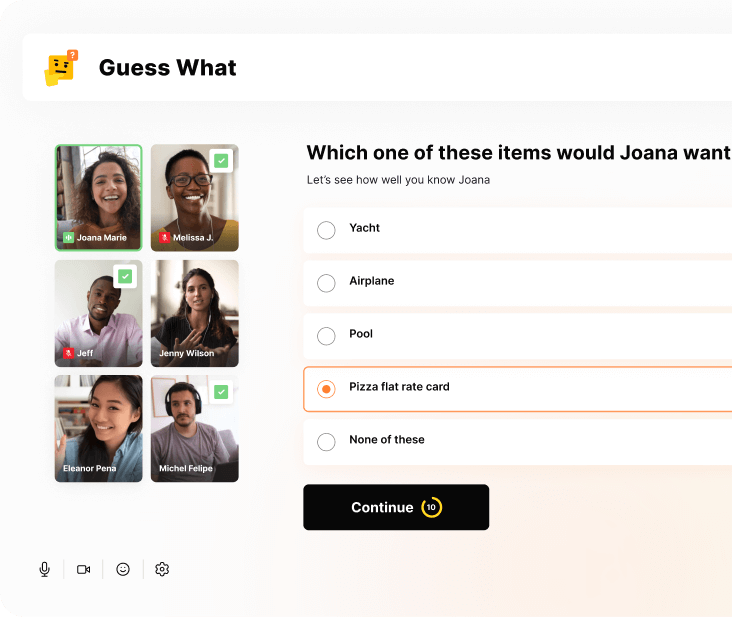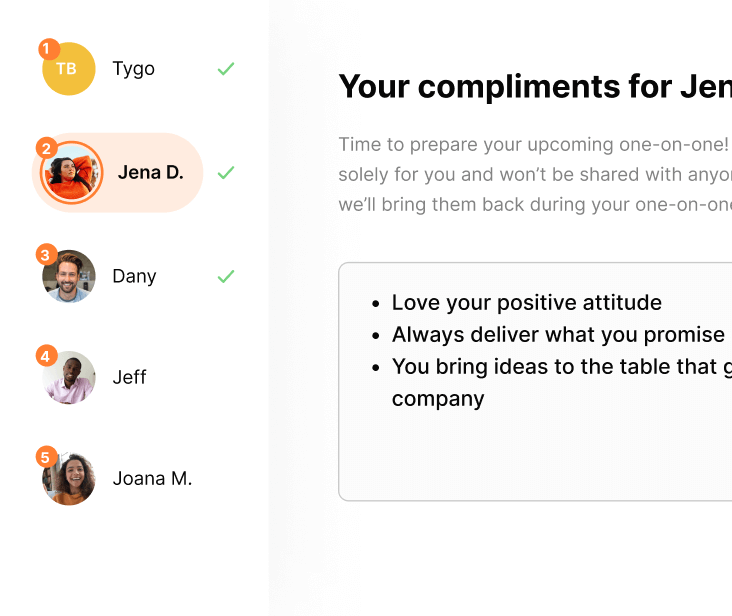Back to Blog
Employee engagement vs employee experience: know the difference
If you've been reading about current developments in the workforce, you've probably come across two buzzwords: employee experience and employee engagement. The two terms are often used interchangeably. And while they are related, they describe two different concepts.
Employee engagement measures how committed, motivated, and productive your employees are. Employee experience is the sum of all interactions that employees have during the entire journey with the company.
Simply put, employee engagement is part of the employee experience.
What is employee experience?
Employee experience refers to every moment of connection and interaction that an employee has with a company. It starts with encountering a job description and ends with their final departure from the company. The employee experience can be positive or negative, but it can also vary based on personal preference. Some elements that can vary one’s employee experience include:
- Is the company welcoming and friendly or standoffish?
- Is management trusting or micromanaging?
- Are growth opportunities made clear or left unclear?
These elements often get divided into distinct phases of an employee life cycle. According to Gallup, these phases include:
- Attract. Using effective recruitment to get the talent you want.
- Hire. Choose the right people and offer the compensation that will make them say “yes.”
- Onboard. Make the crucial first days and weeks a learning experience that prepares them to do great.
- Engage. Figure out what drives employees and help them get motivated, connected, and committed.
- Perform. Support high achievers in hitting their metrics and achieving their goals.
- Develop. Give employees who have shown success in past endeavors a space to grow skills and take on new responsibilities.
- Depart. Realistically, most employees do eventually work somewhere else. Make the exit process so positive that they’ll be referring top people back to you in the future.
Share fun facts and bond with a team quiz
Have your participants choose from a list of questions they’d like their coworkers to answer about them, before watching as they guess the right answer.
01. Yes
share-fun-facts-and-bond-with-a-team-quiz

Run a guided recognition activity
Have your participants choose from a list of questions they’d like their coworkers to answer about them, before watching as they guess the right answer.
01. Yes
run-a-guided-recognition-activity

Organize a virtual cooking class
Hire a professional chef to help your team cook a delicious lunch or dinner. May be difficult for co-workers with families. To find providers and get tips, read our blog about virtual cooking classes.
02. No
organize-a-virtual-cooking-class

Hire a stand-up comedian
Have your participants choose from a list of questions they’d like their coworkers to answer about them, before watching as they guess the right answer.
02. No
hire-a-stand-up-comedian

No items found
No items found
Table of contents
If you've been reading about current developments in the workforce, you've probably come across two buzzwords: employee experience and employee engagement. The two terms are often used interchangeably. And while they are related, they describe two different concepts.
Employee engagement measures how committed, motivated, and productive your employees are. Employee experience is the sum of all interactions that employees have during the entire journey with the company.
Simply put, employee engagement is part of the employee experience.
What is employee experience?
Employee experience refers to every moment of connection and interaction that an employee has with a company. It starts with encountering a job description and ends with their final departure from the company. The employee experience can be positive or negative, but it can also vary based on personal preference. Some elements that can vary one’s employee experience include:
- Is the company welcoming and friendly or standoffish?
- Is management trusting or micromanaging?
- Are growth opportunities made clear or left unclear?
These elements often get divided into distinct phases of an employee life cycle. According to Gallup, these phases include:
- Attract. Using effective recruitment to get the talent you want.
- Hire. Choose the right people and offer the compensation that will make them say “yes.”
- Onboard. Make the crucial first days and weeks a learning experience that prepares them to do great.
- Engage. Figure out what drives employees and help them get motivated, connected, and committed.
- Perform. Support high achievers in hitting their metrics and achieving their goals.
- Develop. Give employees who have shown success in past endeavors a space to grow skills and take on new responsibilities.
- Depart. Realistically, most employees do eventually work somewhere else. Make the exit process so positive that they’ll be referring top people back to you in the future.
What is employee engagement?
Employee engagement includes how loyal, supported, motivated, and connected employees are. Research has shown many drivers of employee engagement. These include growth potential, flexible work, diversity and a welcoming environment, and social responsibility practices. Focusing on these elements can boost your employee’s connection to the company.
Some qualities of high-employee-engagement companies, according to Deloitte research:
- Trust in leadership. Employees believe the top executives know what they’re doing and do it well.
- Supportive management. Direct supervisors seek the resources, flexibility, and growth employees need. Management should feel firmly in the employee’s corner.
- Meaningful work. This includes a great vision for innovation. It could also be work that does good for customers. It could even involve knowing your valuable role within your team’s needs. Meaning can come from many places.
- Positive work environment. Negativity can bring a team down. Having pleasant interactions and people excited to be at work can improve work for everyone else. Great recognition of hard work can also help with a positive work environment.
- Growth opportunity. Feeling like more pay or responsibility will come if you go above and beyond is a great motivator at work.
What’s the difference between employee experience and employee engagement?
Employee experience includes the various individual moments where a company creates an environment or connection with an employee. On the other hand, engagement is how the employees respond to the many aspects of their experience.
In the best scenario, they respond to their employee experience by being motivated, committed, and productive – the components of a highly engaged employee.
Although the goal is for employees to be engaged throughout their time with a company, we can see in the lifecycle that building relationships and engagement becomes especially important after onboarding. That’s because an engaged team will also deliver a good performance.
There are best practices for employee experience and engagement, such as supportive manager relationships and transparent paths to growth. However, a given employee may or may not respond with strong engagement to the exact mix of experiences they have at a company. Widespread employee engagement comes from both best practices and being attuned to your specific employees, who may value some best practices over others.
How do you boost employee engagement, though?
- Invest time in virtual team building activities that help teams connect and trust each other.
- Save time by using a virtual employee engagement platform to come together as a team from wherever you are.
- Compare the stats at your company to wider employee engagement statistics.
- Explore employee engagement solutions that offer recognition, pulse surveys, and more.
- Use employee engagement apps to make it fast and easy for your employees to participate in new initiatives.
- Implement periodic employee engagement surveys to see how you’re improving overall morale and other metrics.
Subscribe to get our latest updates
Subscribe to get our latest updates
.webp)





%20(1).jpg)